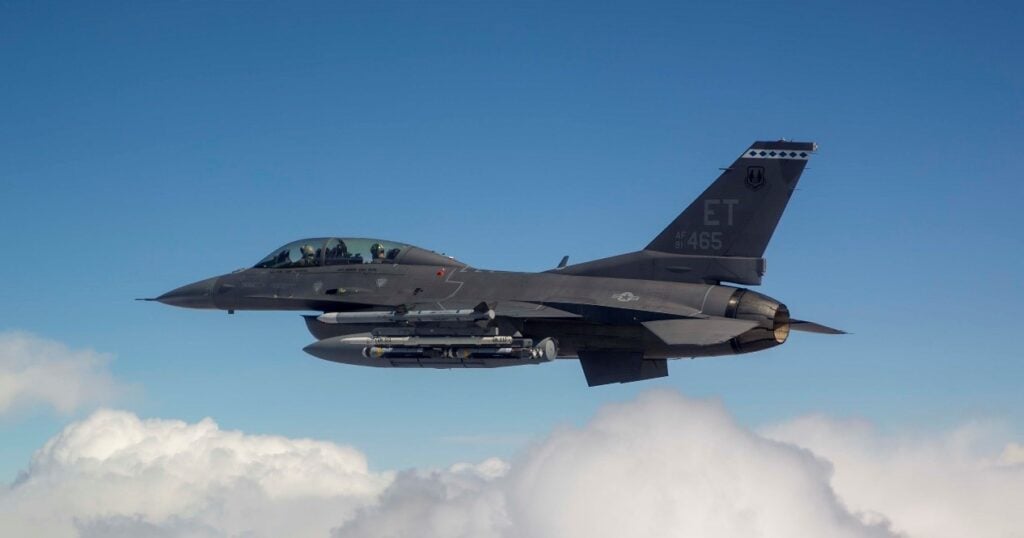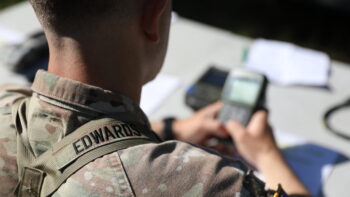
Collaborative Small Diameter Bombs (CSDBs) are carried on the wing of an F-16 fighter during a Golden Horde demo.
AFA: Virtual “gladiators” — digitally designed, highly autonomous drones — will spar in the Air Force Research Laboratory’s new Golden Horde Colosseum to test technologies enabling them to swarm a target or pair with piloted aircraft.
The aim of the contests, under an initiative called Operation Protovision, “is to provide a virtual environment, where we can bring the best of breed that industry has in collaborative weapons, whether it’s autonomous software or networked radios, and look for opportunities for them to have a virtual environment and have a bit of a virtual face off,” Maj. Gen. Heather Pringle, AFRL director, told reporters today.
The concept is modeled on DARPA’s AlphaDogFight trials of simulate aircraft piloted by artificial intelligence algorithms.
Operation Protovision is a collaborative effort with the Defense Innovation Unit (DIU) and John Hopkins Applied Physics Lab, announced on Sept. 15. DIU awarded contracts, under their Commercial Solutions Opening acquisition authority, to the first six “gladiators,” the announcement said: Autonodyne, EpiSci, L3Harris, Lockheed Martin, Shield AI, and Systems & Technology Research. The Georgia Tech Research Institute and an AFRL government team are also involved.
Golden Horde is one of AFRL’s high priority Vanguard programs, which are aimed at rapidly transition to operators. AFRL held three live tests over the past year, and then canceled the live testing program to move into the digital realm.
The first test, held Dec. 15, 2020, failed to meet all its flight objectives, so the second test utilized improved software. The second flight test, Feb. 19, involved four of AFRL’s in-house developed Collaborative Small Diameter Bomb (CSDB), and featured data links to communicate, chose targets (based on pre-programmed algorithms) and coordinate strikes against an array of targets, independently from the human pilot. In the third test, held May 25, two F-16s simultaneously released CSDBs — four from one aircraft and two weapons from the other — and the weapons then communicated with each other.
CSDB is essentially a souped-up version of Boeing’s Small Diameter Bomb that the Air Force has in abundance. AFRL and prime contractor Scientific Applications & Research Associates (SARA) led the development, with SARA providing the seeker for finding adversary GPS jammers.
Speaking on the margins of the annual Air Force Association Air, Space & Cyber conference, Pringle explained that while AFRL intends to revive live demos in the future, the focus of the Golden Horde program’s focus has shifted to emphasize digital design and development — part of the lab’s larger digital campaign to build capabilities and expertise in house.
“The win for the research lab, and for our acquirers is that we get to see the cutting edge technologies that are out there,” she said, and in turn provide industry with “important feedback about how their technologies can operate in a mission relevant space.”
Pringle said AFRL is still developing a schedule for the contests, but that the plan is for each contest to build on assessment of the results of the previous one.






















